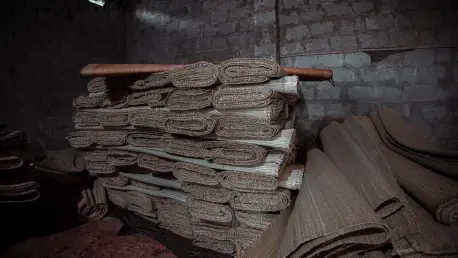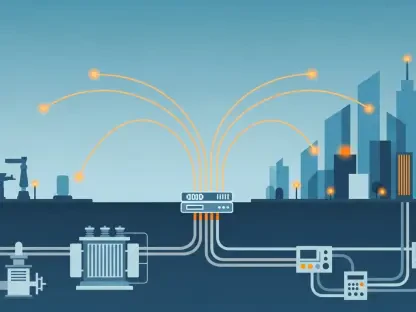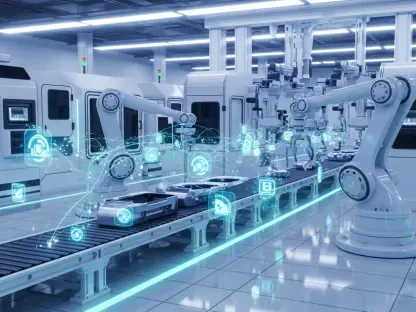Imagine a sprawling construction site where heavy machinery must traverse delicate wetlands or unstable terrain to build critical infrastructure, yet the ground remains unscathed, and costs are significantly reduced due to innovative solutions. This scenario is becoming a reality with TerraLam® Cross Laminated Timber (CLT) access mats, which are redefining how large-scale projects are executed. Designed to support immense weights while protecting the environment, these mats are emerging as a game-changer in the industry. Their unique application was recently highlighted at a major tradeshow, where they served as the foundation for a massive display of industrial equipment, proving their strength in a highly visible setting. Beyond this demonstration, the broader implications for infrastructure development are profound, as the demand for efficient, sustainable tools grows amid looming supply chain challenges. This raises a compelling question: could these mats be the key to transforming how projects are planned and completed?
Unveiling Strength and Versatility
The durability of TerraLam® mats shines through in their ability to handle extreme loads under diverse conditions. Traditionally used to create temporary roads, staging areas, and bridges in rugged or environmentally sensitive landscapes, these mats ensure safe passage for heavy equipment where conventional methods would falter. Made from sustainably sourced domestic wood in Illinois and Texas, they match the strength of traditional wood mats while being notably lighter. This reduced weight translates to greater coverage per truckload, slashing freight and installation costs by up to 50 percent. Furthermore, their design minimizes CO2 emissions, aligning with growing environmental standards in construction. A striking example of their capability was showcased at a recent industry expo, where they supported tons of machinery in a controlled, public setting, drawing attention to their potential for both remote and urban applications. This adaptability positions them as a vital asset for projects requiring robust yet flexible solutions.
Equally impressive is the broader impact of TerraLam® mats on project timelines and efficiency. Their lightweight construction not only reduces transportation expenses but also speeds up deployment, allowing crews to set up access routes swiftly even in challenging terrains. At the end of a project’s lifecycle, these mats offer an additional eco-friendly advantage—they can be repurposed into mulch, reducing waste and supporting sustainable practices. This circular approach resonates with industries under pressure to balance operational demands with environmental responsibility. The public demonstration at the expo further emphasized this versatility, as attendees witnessed firsthand how the mats provide a stable base for heavy equipment without compromising the underlying surface. Such visibility helps bridge the gap between theoretical benefits and real-world application, showcasing how innovative materials can streamline operations while addressing ecological concerns in modern infrastructure endeavors.
Addressing Industry Challenges
As infrastructure needs escalate, the construction sector faces mounting supply chain pressures that threaten project deadlines. A critical concern is the expansion of high-voltage transmission lines, with projections indicating a need for an average of 5,000 miles per year to be built or upgraded over the next five years, according to recent industry data. This surge in demand strains every aspect of the supply chain, from raw materials to labor availability for installation. Access mats like TerraLam® are indispensable in this context, providing the foundational support required to navigate difficult terrains during such expansions. However, the sheer scale of upcoming projects underscores a pressing issue: ensuring an adequate supply of these essential tools amid growing competition for resources. Industry leaders are now tasked with strategizing to meet this demand, recognizing that innovative solutions must be paired with proactive planning to prevent bottlenecks in critical development phases.
Another dimension of this challenge lies in educating stakeholders about the role of advanced materials in overcoming logistical hurdles. While TerraLam® mats have proven their worth in remote and rugged environments, their potential remains underutilized in broader contexts due to limited awareness. Events like the recent tradeshow serve as a platform to highlight their significance, demonstrating how they can support massive weights while maintaining environmental integrity. Beyond physical demonstrations, industry discussions at such gatherings emphasize the urgency of addressing supply chain constraints through collaboration and investment in scalable solutions. With infrastructure projects becoming increasingly complex, the adoption of technologies that enhance efficiency and sustainability is no longer optional but imperative. Raising awareness about tools like these mats is a crucial step toward preparing the sector for the unprecedented growth expected in the coming years, ensuring that progress is not derailed by foreseeable shortages.
Paving the Way Forward
Reflecting on the journey of TerraLam® mats, their impact was evident in how they transformed a tradeshow floor into a testament to engineering prowess, supporting heavy machinery with unwavering stability. Their story over recent months illustrates a shift in how the industry perceives temporary access solutions, moving from niche tools to essential components of major projects. The focus has been on balancing immediate operational needs with long-term environmental goals, a balance these mats achieve with remarkable success. Looking ahead, the next steps involve scaling up production and distribution to meet rising demand while fostering partnerships that amplify their reach. Encouraging dialogue among contractors, policymakers, and manufacturers emerges as a vital strategy to address supply chain gaps. Ultimately, the path forward rests on integrating such innovations into standard practices, ensuring that infrastructure development keeps pace with ambition, safeguarding both progress and the planet for future endeavors.









